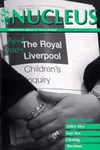Childhood deafness may be conductive or sensorineural. Conductive cases are almost all due to chronic exudative otitis media (glue ear), where fluid in the middle ear causes variable hearing loss. However, most severe cases have rarer sensorineural causes. Around half are due to various genetic conditions. The remainder can be intrauterine (eg. maternal rubella), perinatal (eg. birth asphyxia) or postnatal (eg. meningitis). The lack of collateral history makes it difficult to identify which of the above would be more likely.
Childhood speech impediments may be due to several causes, including palatal deformity, short tongue and tongue tie. We are in fact looking at three healing miracles occurring simultaneously. Restoration of hearing and speech ability are obvious. But if, as is likely, he had been deaf from childhood, the central pathways required for language interpretation and formation would never have matured. Yet we are told, ‘The man’s ears were opened, his tongue was loosened and he began to speak plainly’ (v35). His immediate acquisition of intelligible language may therefore be no less miraculous than his newfound ability to hear.
Jesus’ healing of this man was more than a simple demonstration of compassion. John the Baptist from prison sent his disciples to Jesus, asking, ‘Are you the one who was to come...?’ Jesus replied, ‘The blind receive sight...the deaf hear.... Blessed is the man who does not fall away on account of me’ (Mt 11:2-6). These miracles of healing were a demonstration of his messiahship as the one who would ‘bind up the brokenhearted’ (Is 35:5,6; 61:1). They showed that he would rescue people from more than physical sickness and served as tasters of the time when ‘there will be no more death or mourning or crying or pain, for the old order of things has passed away’ (Rev 21:4).
Differential Diagnosis 36
Mk 9:17-27: Mark claims that an evil spirit was causing convulsions in a young boy. Can modern doctors still believe this?
Luke's opinion in the next issue.































